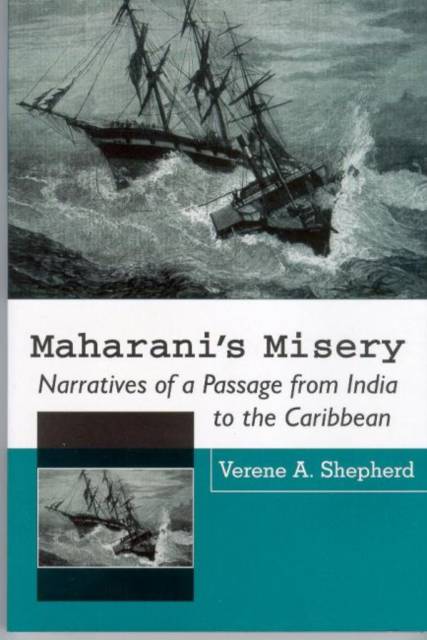
- Afhalen na 1 uur in een winkel met voorraad
- Gratis thuislevering in België vanaf € 30
- Ruim aanbod met 7 miljoen producten
- Afhalen na 1 uur in een winkel met voorraad
- Gratis thuislevering in België vanaf € 30
- Ruim aanbod met 7 miljoen producten
Zoeken
Maharani's Misery
Narratives of a Passage from India to the Caribbean
Verene A Shepherd
Paperback | Engels
€ 41,45
+ 82 punten
Omschrijving
This book continues the ongoing archaeological project of excavating gender-differentiated data on the nineteenth-century post-slavery relocation of bonded labour to the colonial Caribbean. In a broader context, it contributes to that genre of historical writing that focuses on the exercise of social power and authority, through the medium of socio-sexual manipulation, by empowered males over subaltern women. The book combines documentary evidence with a surrounding narrative interpretation in order to highlight the experiences of the young Indian woman, Maharani, who was raped, and died subsequently, on board the ship Allanshaw that sailed from Calcutta to colonial Guyana in 1885. The events on this passage from India should provide further that nineteenth-century labour "migration" replicated several aspects of the Middle Passage of enslaved Africans, although it was never allowed to reach slavery's brutal limits.
Specificaties
Betrokkenen
- Auteur(s):
- Uitgeverij:
Inhoud
- Aantal bladzijden:
- 160
- Taal:
- Engels
Eigenschappen
- Productcode (EAN):
- 9789766401214
- Verschijningsdatum:
- 1/10/2002
- Uitvoering:
- Paperback
- Formaat:
- Trade paperback (VS)
- Afmetingen:
- 147 mm x 235 mm
- Gewicht:
- 322 g

Alleen bij Standaard Boekhandel
+ 82 punten op je klantenkaart van Standaard Boekhandel
Beoordelingen
We publiceren alleen reviews die voldoen aan de voorwaarden voor reviews. Bekijk onze voorwaarden voor reviews.








